
Mexico's economic recovery continues; outlook improves

April 6, 2021
Mexico’s gross domestic product (GDP) growth was revised up slightly to an annualized 13.7 percent in fourth quarter 2020. The consensus GDP growth forecast for 2021, compiled by Banco de México, improved from 3.7 to 3.9 percent in February.[1]
The latest data available show employment, industrial production and retail sales grew, but exports fell. Inflation increased, and the peso lost ground against the dollar.
Economic activity slows in recent months
Growth in Mexico’s global economic activity index—the monthly proxy for GDP—slowed to 0.3 percent based on a three-month moving average (Chart 1). The index rose 0.1 percent in January after being flat in December. Service-related activities (including trade and transportation) were down 0.1 percent. Goods-producing industries (including manufacturing, construction and utilities) increased 0.2 percent and agricultural output grew 1.8 percent.
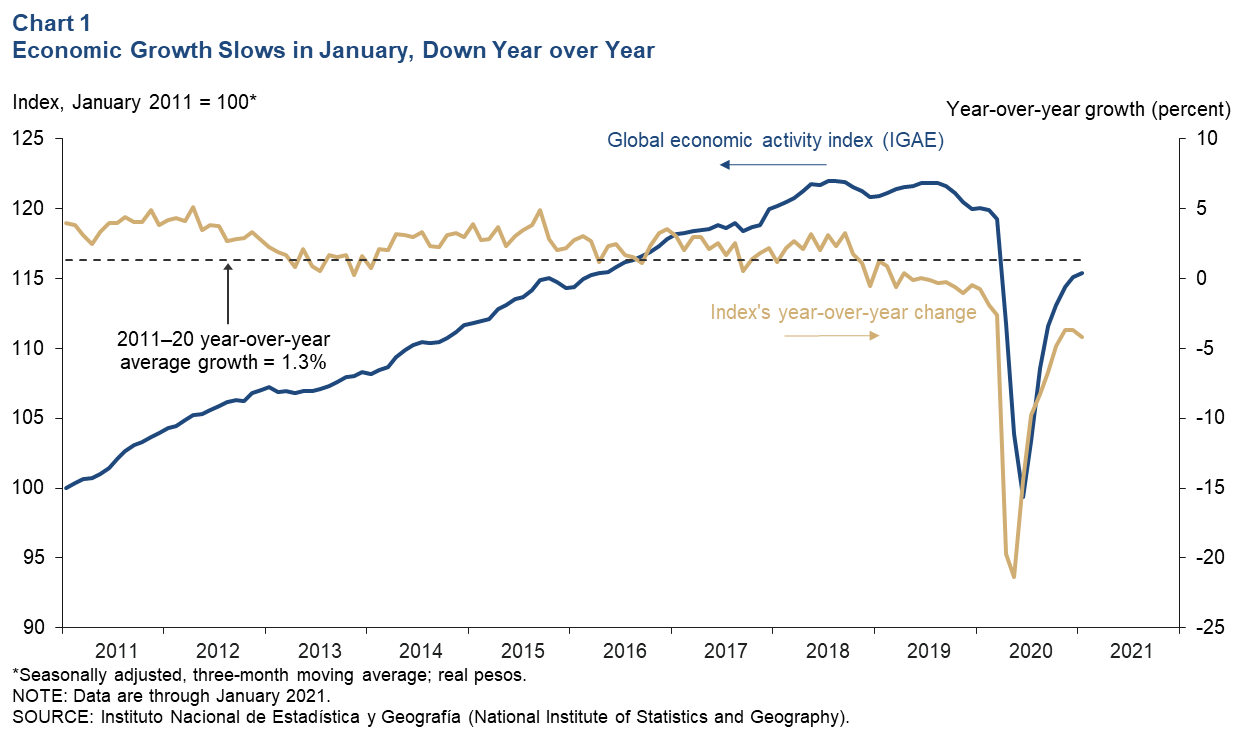
Exports fall
The three-month moving average of total exports fell 0.7 percent in February as manufacturing exports were down 0.9 percent—offsetting the 3.1 percent increase in oil exports (Chart 2). On a month-over-month basis, total exports fell 4.0 percent in February, and manufacturing exports decreased 4.4 percent. Through February, exports are up 0.3 percent compared with the same period in 2020.
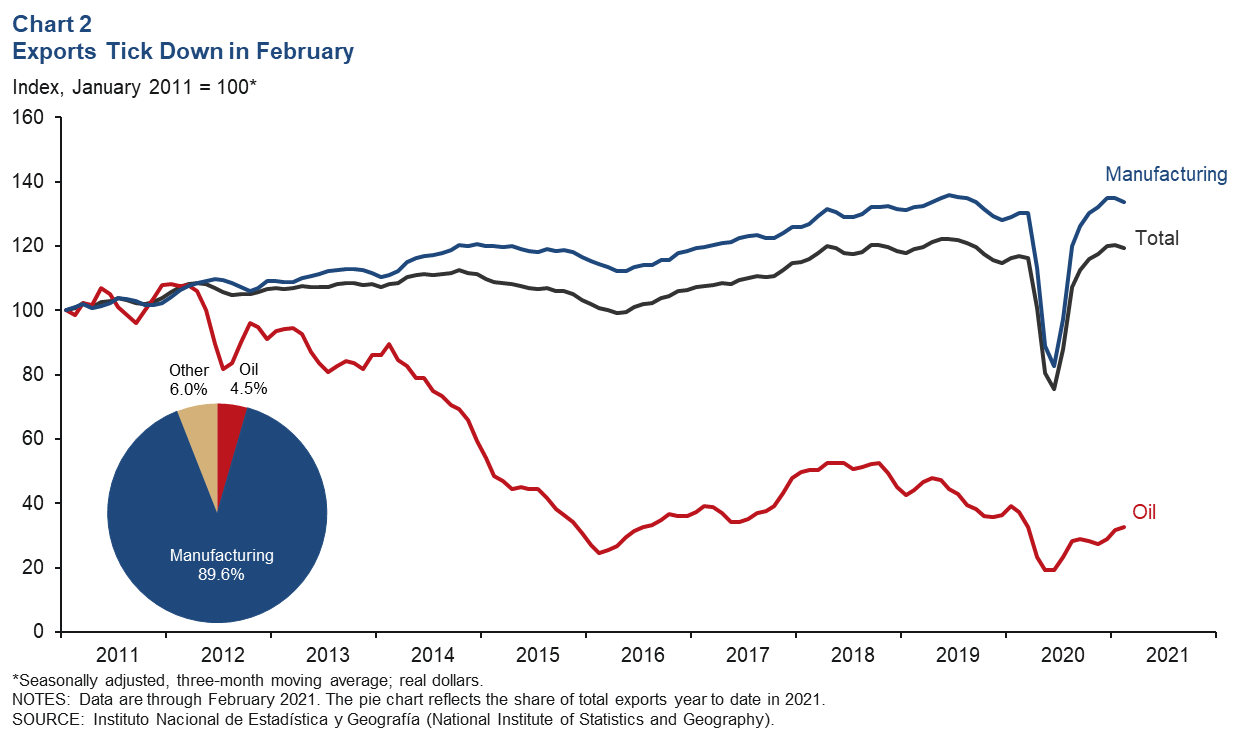
Industrial production increases in January
The three-month moving average of Mexico’s industrial production (IP) index—which includes manufacturing, construction, oil and gas extraction, and utilities—increased 0.4 percent in January; manufacturing IP was up 0.3 percent (Chart 3). On a month-over-month basis, IP was up 0.2 percent in January, while the manufacturing index fell 0.5 percent. North of the border, U.S. IP declined 2.2 percent in February after rising 1.2 percent in January, and the three-month average was flat. The correlation between IP in Mexico and the U.S. increased considerably with the rise of intra-industry trade as a result of the 1994 North American Free Trade Agreement, recently replaced by the United States–Mexico–Canada Agreement.
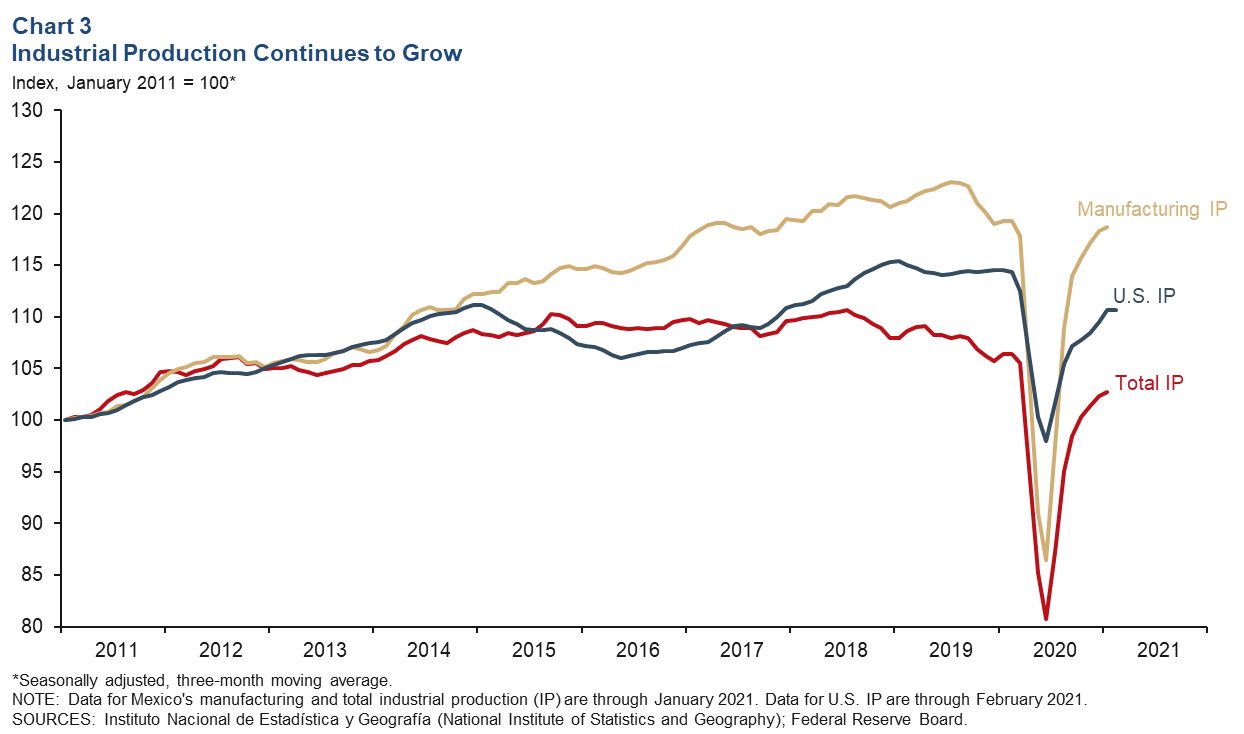
Retail sales inch up
Mexico’s index of real retail sales increased 0.3 percent based on a three-month moving average through January (Chart 4). In January, retail sales grew 0.1 percent, up from a 2.7 percent decline in December.
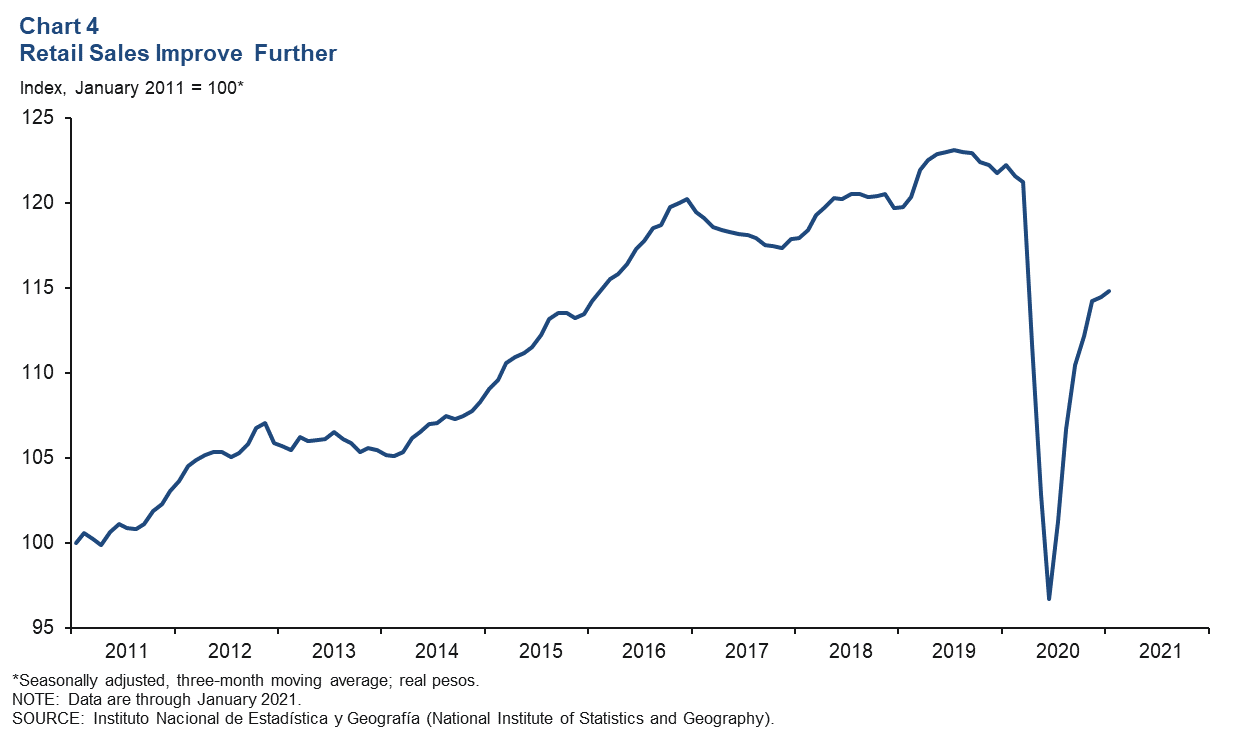
Employment rebounds in February
Formal sector employment—jobs with government benefits and pensions—rose an annualized 2.3 percent (38,000 jobs) in February, after declining 3.1 percent in January (Chart 5). Year-over-year employment contracted 3.3 percent in February. Total employment, representing 53 million workers and including informal sector jobs, declined 4.2 percent year over year in fourth quarter 2020. The unemployment rate in February was 4.5 percent, up from 3.7 percent a year earlier.
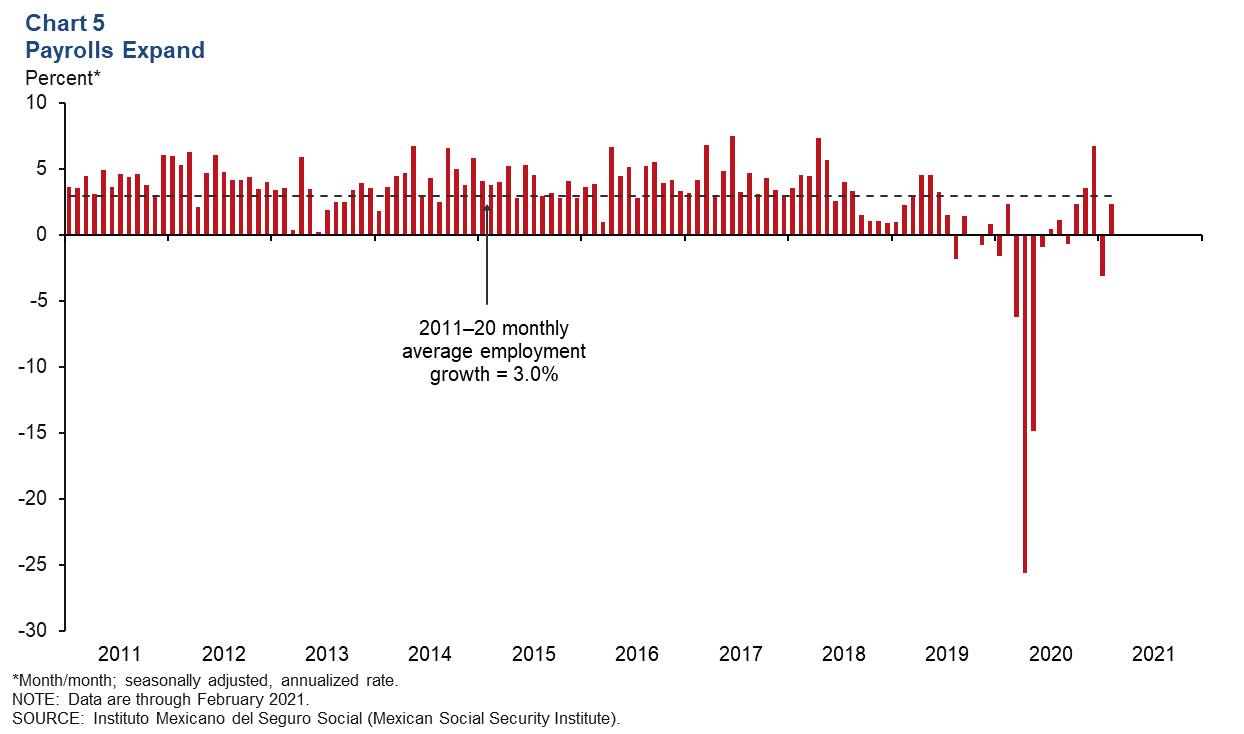
Peso weakens
The Mexican currency averaged 20.3 pesos per dollar in February—down 1.9 percent from January—but was still up 19.5 percent since April 2020 (Chart 6). The peso has been under pressure due to increased uncertainty regarding the impact of COVID-19 on domestic and global growth.
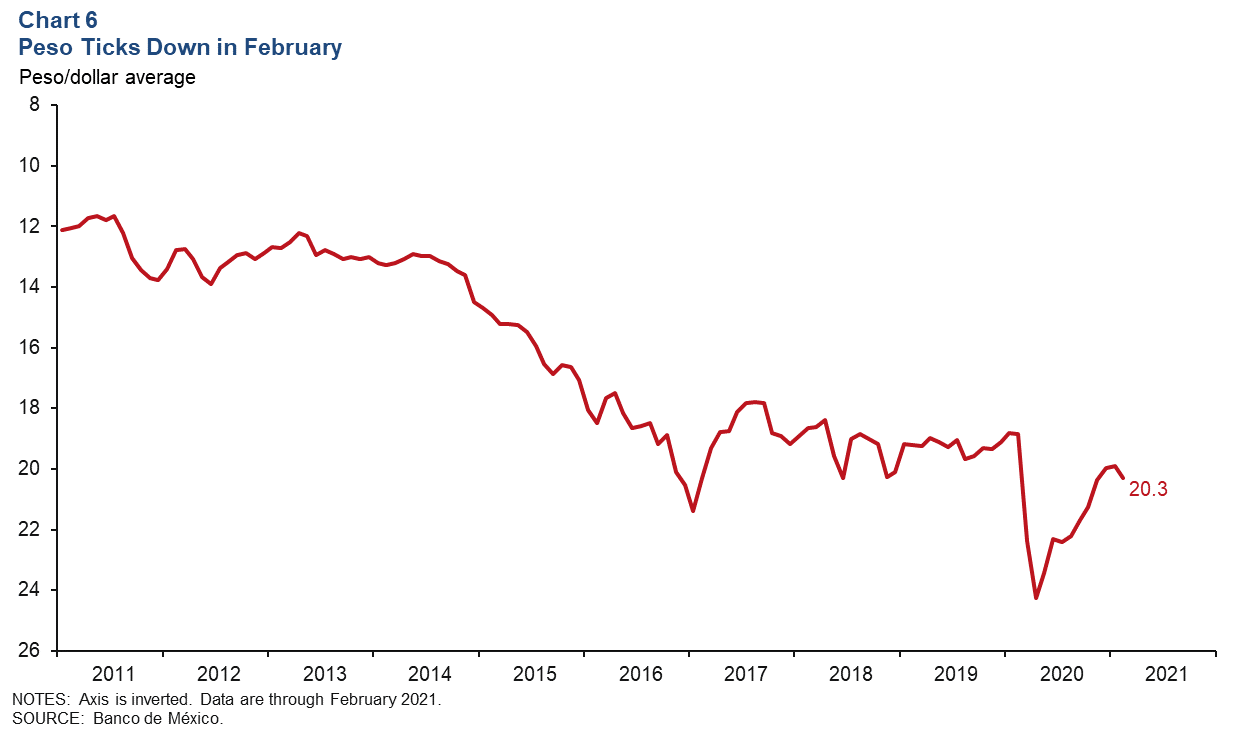
Foreign-owned government debt share ticks down
The share of peso‐denominated Mexican government debt held abroad fell to 21.1 percent in February. The three-month moving average decreased to 21.8 percent (Chart 7). The extent of nonresident holdings of government debt is an indicator of Mexico’s exposure to international investors and is also a sign of confidence in the Mexican economy.
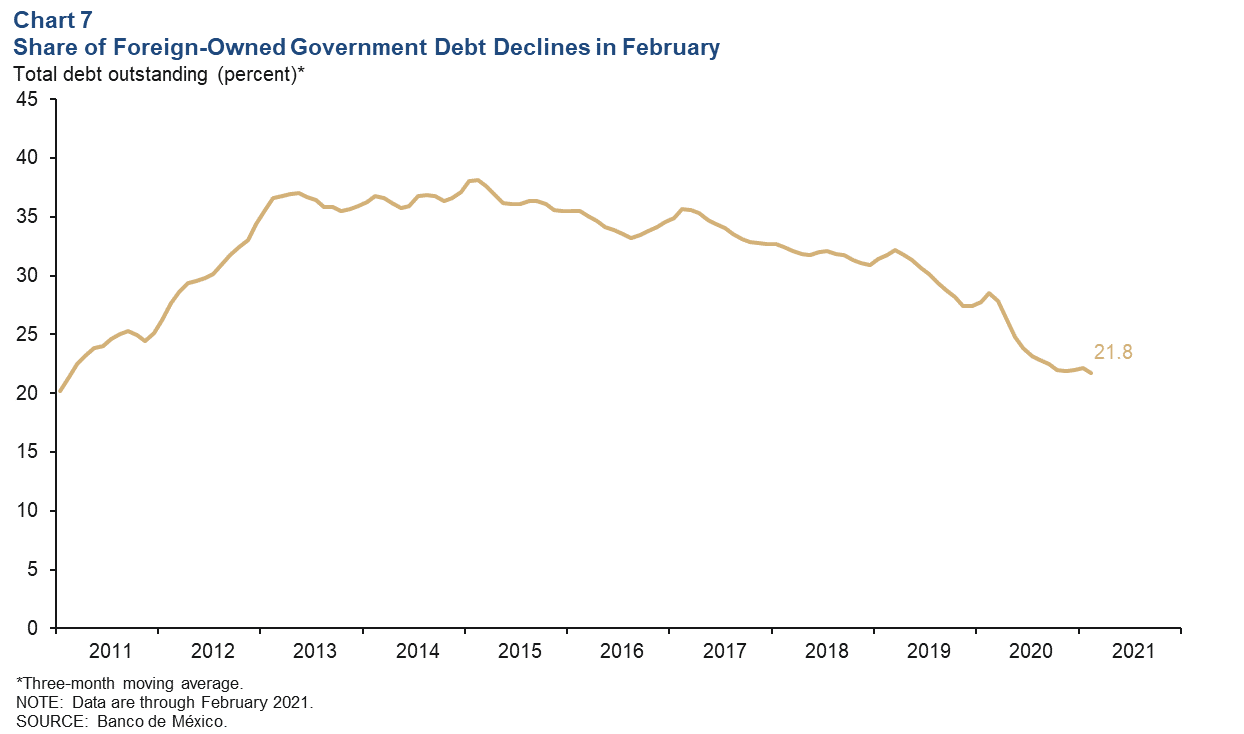
Inflation moves up
Mexico’s Consumer Price Index (CPI) increased 3.8 percent in February over the prior 12 months, up from 3.5 percent in January (Chart 8). CPI core inflation (excluding food and energy) rose 3.9 percent in February over the previous 12 months. Banco de México held the benchmark interest rate at 4.0 percent on March 25 after cutting it by 25 basis points in February. Mexico’s central bank cited the risks for inflation and the need to enable an orderly adjustment of financial conditions as the main reasons to hold the rate steady.
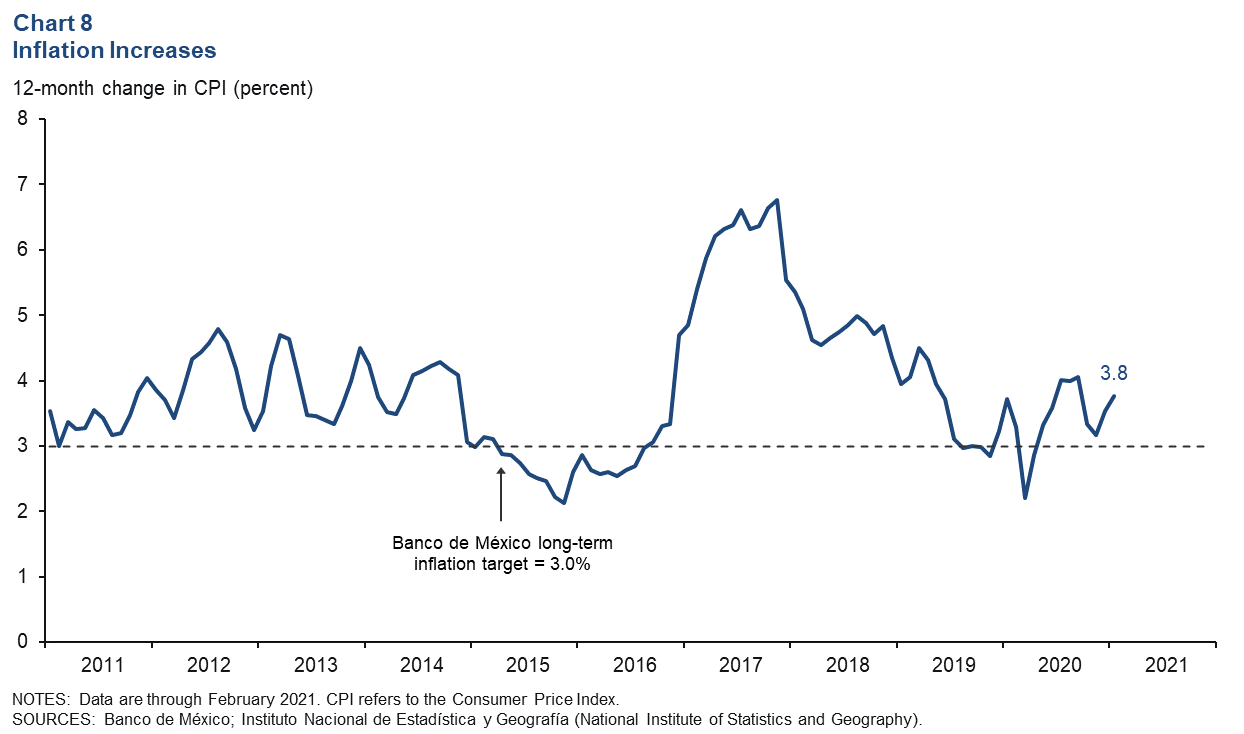
Notes
- Encuesta sobre las Expectativas de los Especialistas en Economía del Sector Privado: Febrero de 2021, (communiqué on economic expectations, Banco de México, February 2021). The survey period was Feb. 24–26.
About the Authors
Cañas is a senior business economist, and Smith is a research analyst in the Research Department at the Federal Reserve Bank of Dallas.